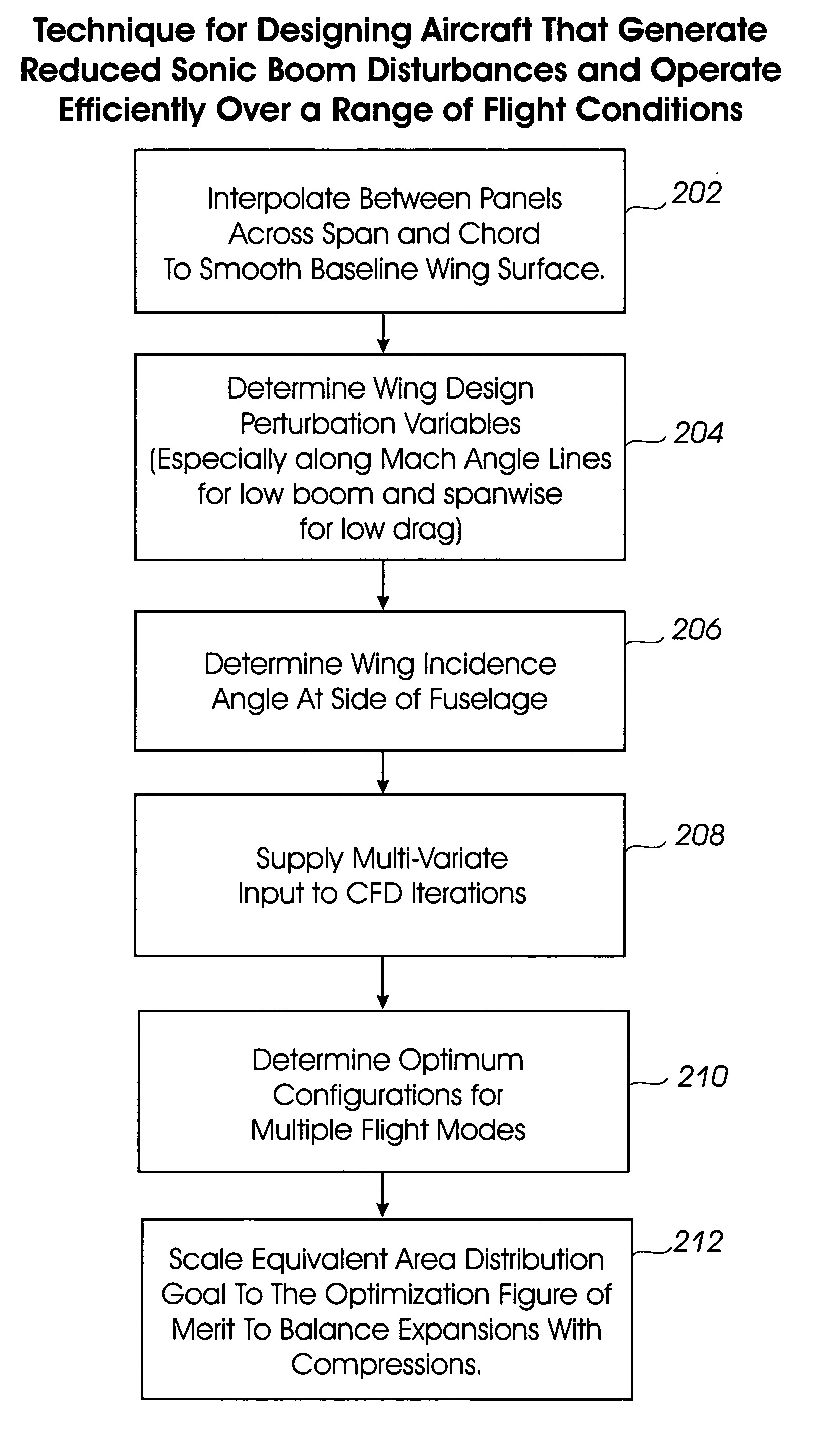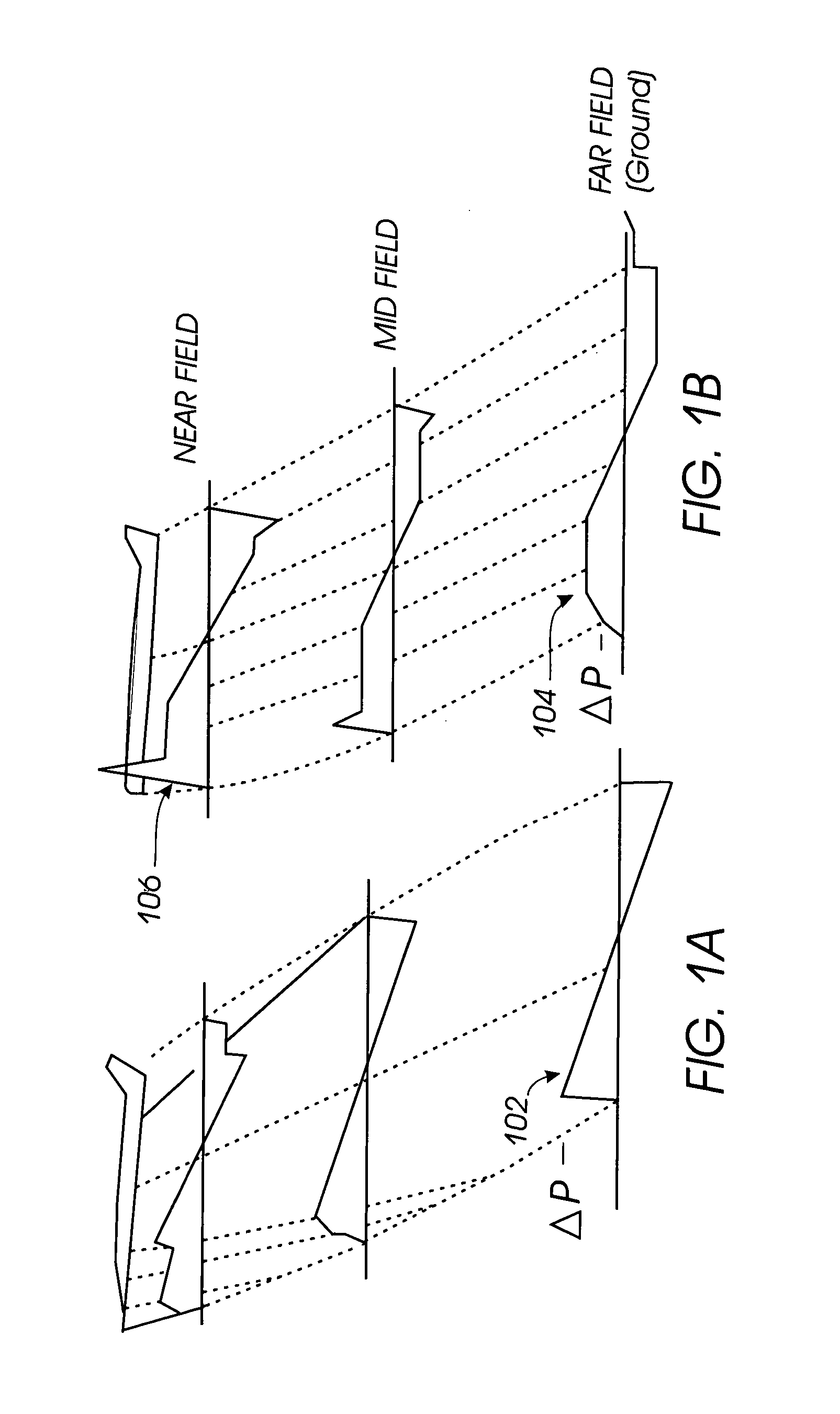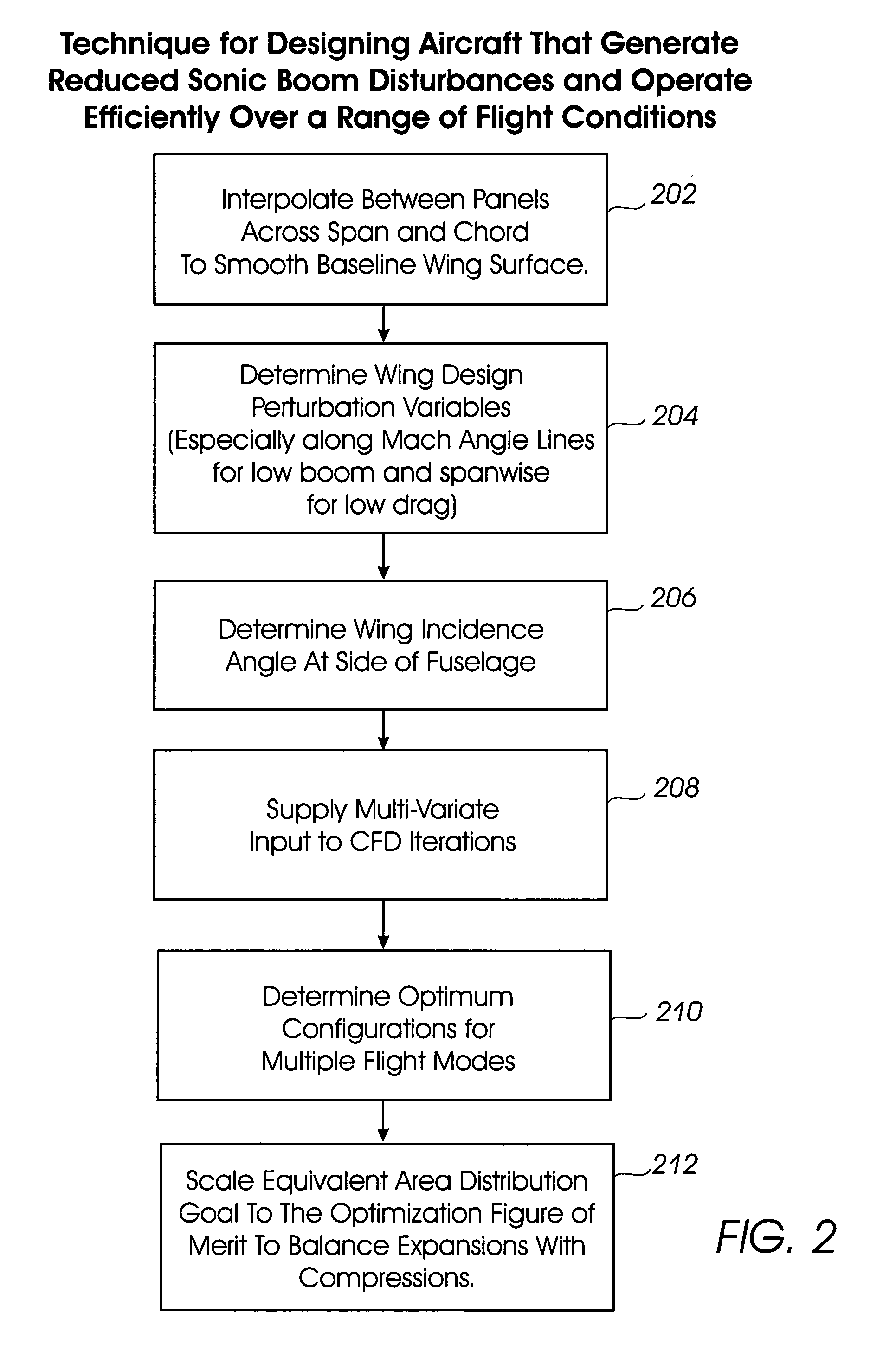System, apparatus, and method for redistributing forces to meet performance goals and shock wave disturbance constraints
a technology of performance goals and redistributing forces, applied in the field of system, apparatus, and method for redistributing forces to meet performance goals and shock wave disturbance constraints, can solve the problems of difficult environmental issues for a viable supersonic commercial, inability to easily flow around the plane, and negative response and regulatory limitations on supersonic travel. to achieve the effect of minimizing shock wave disturban
- Summary
- Abstract
- Description
- Claims
- Application Information
AI Technical Summary
Problems solved by technology
Method used
Image
Examples
Embodiment Construction
[0035] Shaped sonic boom signatures 104 (FIG. 1B) are achieved by tailoring the volume and lift distribution of an aircraft. In addition to low sonic boom capabilities, a commercially viable supersonic aircraft must have low drag to achieve range, fuel efficiency, and payload goals. FIG. 2 shows an embodiment of a flow diagram of processes 202 through 212 that provide capabilities to design aircraft with low drag (high performance) and reduced sonic boom capabilities.
[0036] Part of the theoretical background for processes 202 through 212 is based on the George-Seebass-Darden theory, which requires the pressure disturbance caused by a low boom aircraft to follow an inversely calculated equivalent area distribution goal 300 to result in the lowest shock strength at the ground. As shown in FIG. 3A, when the equivalent area due to geometric area and lift sum to the equivalent area distribution goal 300, a minimized ground sonic boom is expected. Equivalent area is the Mach angle area d...
PUM
 Login to View More
Login to View More Abstract
Description
Claims
Application Information
 Login to View More
Login to View More - R&D
- Intellectual Property
- Life Sciences
- Materials
- Tech Scout
- Unparalleled Data Quality
- Higher Quality Content
- 60% Fewer Hallucinations
Browse by: Latest US Patents, China's latest patents, Technical Efficacy Thesaurus, Application Domain, Technology Topic, Popular Technical Reports.
© 2025 PatSnap. All rights reserved.Legal|Privacy policy|Modern Slavery Act Transparency Statement|Sitemap|About US| Contact US: help@patsnap.com



